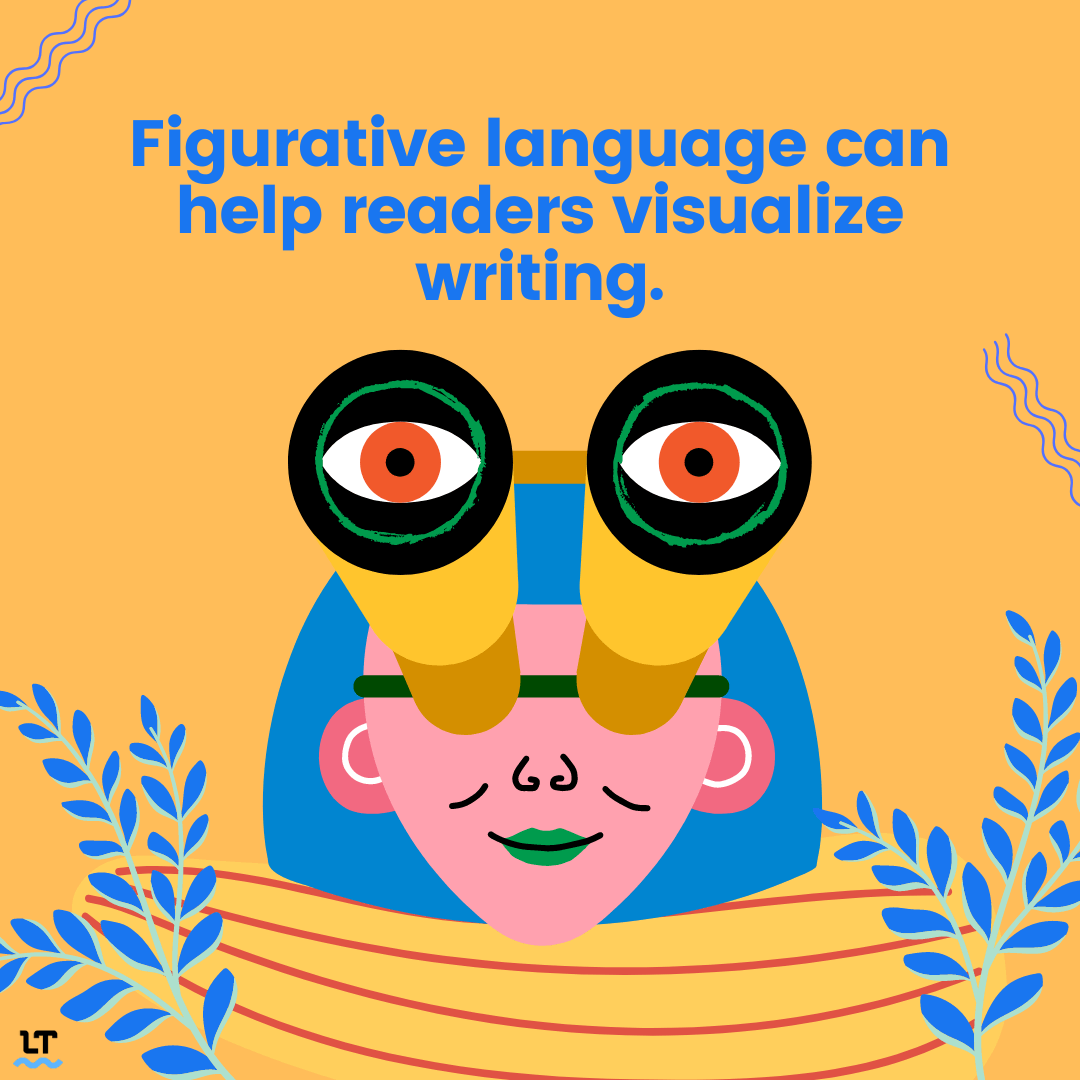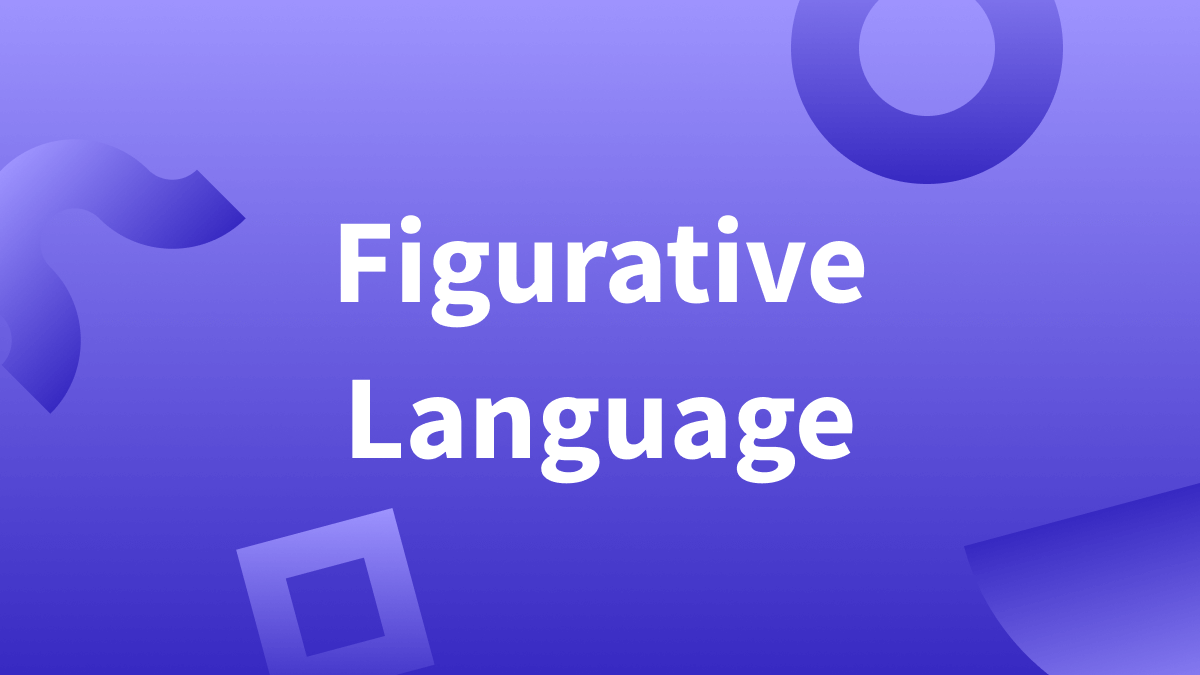What Does Figurative Language Mean?
Figurative language is an excellent tool you can use in writing that helps your audience better visualize and understand your message.
There are several different types including:
What Is Figurative Language?
Figurative language are words or phrases that help readers engage with, visualize, and understand your writing. They do this by transcending the literal definition of words.
Every writer should familiarize themselves with figurative language. Why? Not only because it makes your writing sound nice, but also because it can play a major role in the effectiveness of the message you’re trying to get across.
There are different types of figurative language—some more useful than others depending on what you’re writing about. Below, we’ll go over 10 common types of figurative language.

Types of Figurative Language
1. Similes
Similes use the words “as” or “like” to explicitly highlight the similarities between two seemingly different things.
You’re sweet like candy.
2. Metaphors
Compared to similes, metaphors are implicit comparisons because they don’t use “as” or “like.”
Daniel is the light of my life.
There are many different types of metaphors, including standard, implied, mixed, extended, and conceptual metaphors.
3. Idioms
An idiom is a phrase in which the meaning of the whole cannot be derived from the meaning of the parts.
There are plenty of fish in the sea.
A non-native English speaker might not deduce that this phrase means “there are numerous eligible people to date.”
4. Hyperboles
A hyperbole is an exaggerated statement that is used to emphasize something or add a desired effect. You’ve likely used a hyperbole if you’ve ever said something like:
I’m so tired that I’m going to sleep for the rest of time.
The example above is hyperbolic because there’s no way someone can literally sleep for the rest of time. However, it does help the audience understand how tired the writer (or speaker) is.
5. Oxymorons
An oxymoron is a figure of speech in which two contradictory words are put side by side.
In my unbiased opinion, the movie was terrible.
Unbiased opinion is an oxymoron because opinions are inherently biased. There are many reasons a writer might decide to include an oxymoron in their text, whether it be for comedic or dramatic effects.
6. Puns
Simply put, a pun is a humorous play on words that exploits the different meanings of a word.
Make like a tree and leave.
This pun makes use of leave as a verb, and the fact that a tree has leaves (plural noun). Puns are often added to a text to entertain readers.
7. Personification
Personification is when human qualities and abilities are figuratively applied to inanimate objects or abstractions.
Personification makes it easier to write about things that are usually challenging. It also makes your writing more engaging and tangible.
The last piece of the pie was calling my name.
Obviously, pie cannot call out someone's name. But personifying it is a creative way to let the audience know that the last piece of pie was tempting to you.
8. Allusion
An allusion is when a famous person, place, literary work, or event is implicitly referenced. For example:
Surrounded by the majesty of the Rocky Mountains, I could be forgiven for thinking I was in Eden.
The example above alluded to the biblical Garden of Eden.
9. Litotes
Litotes is a type of ironic understatement that uses negative terms to express a positive statement.
It’s not uncommon for something like this to happen.
The use of not and uncommon together ends up meaning common. Litotes are used to emphasize the positive through the use of negatives. They also sometimes make your reader pause and reflect.
10. Synecdoche
Synecdoche is a type of figurative language in which a part of something is used to represent a whole (or vice-versa).
Did you see Jason’s new set of wheels?
Here, wheels represents a car. A synecdoche can be useful when you want to keep your writing fluent or concise.
Experienced writers know when to employ figurative language in their writing. They also know which ones work best depending on the setting and context of the text.
Familiarizing yourself with these different types of figures of speech is an effective way of sharpening your writing skills.
If you want to take it a step further, you can also elevate your writing by using LanguageTool—a multilingual writing assistant that can check for spelling, grammar, and punctuation mistakes. If that weren’t enough, it can also suggest stylistic improvements and help rephrase your sentences. Try it today.

